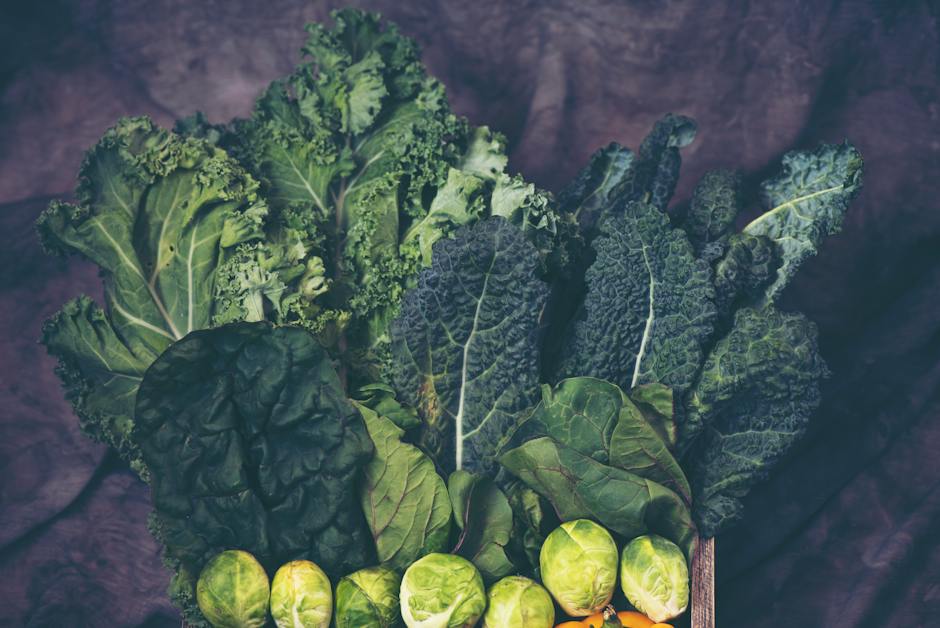The What And Why Of Hydroponic Farming
Hydroponic farming, also known as soilless agriculture, is a modern and innovative technique that is revolutionizing the way we grow and harvest crops. Unlike traditional farming methods which require fertile soil, hydroponics allows plants to be grown in a controlled environment without the need for soil. Instead, plants are grown in a nutrient-rich water solution, ensuring that they receive all the necessary elements for healthy growth.
There are several reasons why hydroponic farming has gained such popularity in recent years. Firstly, it allows for year-round cultivation, regardless of climate or seasonality. This means that farmers can grow crops even in regions that are not traditionally conducive to agriculture. Additionally, hydroponics also eliminates the risks associated with soilborne diseases and pests, as the plants are grown in a clean and sterile environment.
Furthermore, hydroponic farming requires significantly less water compared to traditional farming methods. This is because the water in a hydroponic system is recirculated and reused, minimizing water wastage. In a world where water scarcity is becoming a pressing issue, hydroponics offers a sustainable and eco-friendly solution to agricultural practices.
Moreover, hydroponic farming allows for higher crop yields and faster growth rates. As plants receive precisely measured amounts of nutrients and water, they can grow in optimal conditions, resulting in healthier and more productive crops. This can be especially beneficial in urban areas where space is limited, as hydroponics enables vertical farming and the cultivation of multiple crops in a smaller area.
In conclusion, hydroponic farming presents numerous advantages over traditional farming methods. Its ability to surpass limitations imposed by climate, soil quality, and pests makes it an ideal solution for ensuring a consistent and reliable food supply. Moreover, its water efficiency, higher crop yields, and sustainable practices make hydroponics a promising technique for the future of agriculture.
Benefits of hydroponics (highlighting advantages such as faster growth, increased crop yields, and reduced water usage)

Hydroponic farming, a modern method of cultivation, has gained significant attention in the agricultural industry. This innovative technique involves growing plants without using soil, instead utilizing nutrient-rich water solutions to provide essential minerals and elements directly to the roots. The benefits of hydroponics are numerous, making it an increasingly popular choice for farmers and entrepreneurs looking to revolutionize the way we grow crops.
One of the major advantages of hydroponics is the accelerated growth rate of plants. Without the need to search for nutrients in soil, plants can direct their energy towards growth and development. As a result, hydroponic crops tend to grow faster compared to traditional farming methods. This expedited growth ensures a more efficient use of time, enabling farmers to harvest their crops sooner and increase their overall productivity.
In addition to quicker growth, hydroponic farming also boasts increased crop yields. By managing the nutrients and environmental factors precisely, hydroponic systems optimize plant growth and maximize the production potential of a given space. This means that hydroponic farmers can cultivate a higher volume of crops in a smaller area when compared to conventional methods. Such increased crop yields contribute to overall food security and sustainability, especially in areas where arable land is limited.
Another key benefit of hydroponics is its drastically reduced water usage compared to traditional farming techniques. In hydroponic systems, water is continuously recirculated and reused, conserving this precious resource. This sustainable approach to water management not only reduces agricultural water consumption but also minimizes the potential for water pollution caused by excessive fertilizer runoff. As water scarcity becomes a pressing global issue, hydroponics offers a viable solution to grow more food using fewer resources.
Furthermore, hydroponics allows farmers to have better control over the growing environment, resulting in healthier and more disease-resistant plants. Since hydroponic crops are grown indoors or in controlled environments, pest infestations and diseases can be significantly minimized, reducing the need for chemical interventions. This can lead to cleaner and healthier produce, appealing to health-conscious consumers and adding value to hydroponic products in the market.
Overall, hydroponic farming is transforming the agricultural landscape by offering numerous benefits. From faster plant growth and increased crop yields to reduced water usage and improved control over growing conditions, hydroponics provides a more sustainable and efficient approach to farming. As the demand for high-quality, environmentally friendly produce continues to grow, embracing hydroponics could be the key to unlocking profitable and sustainable farming practices.
How hydroponic farming works (explaining the basic principles of the system and the various methods used)

Hydroponic farming is an innovative method of cultivating plants and crops without soil, offering a multitude of benefits for both farmers and consumers. This system relies on providing essential nutrients and water directly to the plants’ root systems in a controlled environment. Let’s explore the fundamental principles of hydroponic farming and the different methods used in this unique agricultural practice.
One of the primary principles behind hydroponic farming is the use of nutrient-rich water solutions as a substitute for soil. In traditional soil-based farming, plants extract nutrients from the soil, but hydroponics bypasses this step by directly delivering a precise mix of nutrients in water form. These nutrient solutions are carefully formulated to ensure optimal growth and development of the plants.
There are various hydroponic techniques used in commercial agriculture and home gardening. The most common methods include:
1. Nutrient Film Technique (NFT): This technique involves a constant flow of a thin film of nutrient solution over the roots of the plants. The excess solution is then recirculated, ensuring that the plants have a continuous supply of nutrients.
2. Deep Water Culture (DWC): In the DWC method, plants are suspended in a nutrient solution with their roots submerged. Oxygen is supplied through bubbles or air pumps to prevent root rot and provide adequate oxygenation for plant growth.
3. Aeroponics: This method suspends plant roots in air and relies on a fine mist or aerosol of nutrient solution to provide nourishment. The roots are exposed to both nutrients and oxygen, promoting rapid growth and higher yields.
4. Ebb and Flow: This technique, also known as flood and drain, involves periodically flooding the plant roots with nutrient-rich water, which is then drained away. This ensures that the plants receive both nutrients and oxygen, promoting healthy growth.
Regardless of the method used, hydroponic farming allows for precise control over environmental factors such as pH levels, temperature, and light exposure. This ability to fine-tune conditions provides optimal plant growth and reduces the risk of diseases and pests.
Moreover, hydroponic farming requires significantly less water compared to traditional soil-based agriculture. The closed-loop system of nutrient solutions allows for efficient use and recycling of water, reducing water waste and dependency on external water sources.
In conclusion, hydroponic farming revolutionizes the way we cultivate plants by removing the reliance on soil and maximizing control over growth conditions. The diverse methods used in hydroponics offer flexibility and scalability for various types of crops and growing environments. With its efficient water usage, higher yield potential, and reduced environmental impact, hydroponic farming holds great promise for the future of sustainable and productive agriculture.
Nutrient solutions and their importance (discussing the role of nutrient solutions in providing essential elements to the plants)

Nutrient Solutions and Their Importance
One of the key components of hydroponic farming is the use of nutrient solutions. These solutions play a vital role in providing the essential elements that plants need to grow and thrive without soil.
In traditional soil-based farming, plants obtain nutrients from the soil, which holds a certain amount of organic matter and minerals. However, in hydroponics, the absence of soil means that plants solely rely on nutrient solutions for their growth requirements.
Nutrient solutions are carefully formulated mixtures of mineral salts and water, containing all the essential macro and micronutrients necessary for plant growth. These solutions are typically tailored to suit the specific needs of different plant varieties, ensuring optimal growth and healthy yields.
The importance of nutrient solutions lies in their ability to provide a controlled and well-balanced supply of nutrients directly to the plant roots. Since hydroponics eliminates the variability associated with soil composition, nutrient solutions offer a reliable and consistent source of nourishment.
Moreover, nutrient solutions allow for precise control over nutrient levels, ensuring that plants receive the exact amounts required for their growth stages. This level of control can significantly impact plant productivity and quality.
Another advantage of using nutrient solutions in hydroponic farming is the reduced risk of pests and diseases. The absence of soil reduces the presence of soil-borne pathogens, and nutrient solutions are typically sterilized to eliminate any potential harmful microorganisms. This ensures that the plants receive uncontaminated nutrition, leading to healthier plants and decreased reliance on pesticides.
It is worth mentioning that maintaining the correct balance of nutrients in hydroponic systems is crucial. Monitoring and adjusting nutrient levels regularly is essential to prevent nutrient deficiencies or toxicities, which can hinder plant growth and affect crop yields.
In conclusion, nutrient solutions are a fundamental component of successful hydroponic farming. By providing the necessary minerals in a controlled and balanced manner, these solutions contribute to healthier plants, improved productivity, and reduced reliance on external factors such as soil conditions and pest infestations. With the right understanding and management of nutrient solutions, hydroponic farmers can achieve consistent, high-quality crops while embracing the efficiency and sustainability of this modern agricultural method.
Comparison to traditional soil farming (examining the differences between hydroponic and traditional soil-based farming methods)
Hydroponic farming, a soilless method of cultivation, has gained significant attention in recent years. It offers a range of benefits and advantages over traditional soil farming techniques. Let’s delve into the comparison between hydroponic and traditional soil-based farming methods to better understand why hydroponics is becoming a preferred choice for modern farmers.
1. Resource Efficiency:
In traditional soil farming, plants extract nutrients and water from the soil, often leading to inefficient use of resources. On the other hand, hydroponic systems provide a controlled environment where nutrients are directly supplied to the roots in a highly efficient manner. With hydroponics, water consumption can be significantly reduced compared to traditional farming methods, making it an environmentally-friendly choice.
2. Space Utilization:
In conventional farming, large areas of land are required for crop cultivation. However, hydroponics allows farmers to maximize space utilization as plants are grown vertically or in compact systems. By stacking multiple layers of crops, hydroponics provides the opportunity to grow more plants in smaller spaces. This is particularly advantageous in urban areas where land availability is limited.
3. Crop Yield and Quality:
Hydroponic farming offers the potential for higher crop yields compared to traditional soil-based farming. By providing an optimized environment with ideal nutrient concentrations, water availability, and lighting conditions, plants can grow faster and produce larger harvests. Moreover, since hydroponics eliminates the risk of soil-borne diseases and pests, crop quality and consistency are often superior.
4. Year-round Cultivation:
Unlike traditional farming, which is highly dependent on specific seasons, hydroponics enables year-round cultivation. By controlling and manipulating environmental factors like temperature, humidity, and lighting, farmers can recreate the ideal conditions needed for plant growth and extend growing seasons. This not only allows for a continuous supply of fresh produce but also enhances profitability.
5. Nutrient Control:
The nutrient content in soil can vary significantly, leading to inconsistent plant growth and quality. In hydroponics, farmers have precise control over the nutrient solution, ensuring that plants receive an optimal balance of nutrients at all times. This ability to adjust nutrient levels based on specific plant requirements results in better overall crop health and allows for customization as per market demands.
While traditional soil farming methods have their merits and continue to be widely practiced, hydroponics presents a viable alternative with numerous benefits. Its resource efficiency, space utilization, higher crop yield, year-round cultivation, and nutrient control capabilities make hydroponic farming an attractive option for modern agricultural practices. By adopting hydroponics, farmers can move towards sustainable, efficient, and productive farming systems.
Common types of hydroponic systems (exploring popular systems like nutrient film technique, deep water culture, aeroponics, etc.)

In the world of innovative agricultural practices, hydroponic farming has gained significant attention for its ability to cultivate crops efficiently without the use of soil. With a controlled environment and a carefully balanced nutrient solution, this technique has revolutionized traditional farming methods. In this section, we will explore some common types of hydroponic systems that have gained popularity among farmers and entrepreneurs alike.
1. Nutrient Film Technique (NFT): This system involves a thin, sloping channel through which a continuous film of nutrient-rich water flows. Plants are placed in small holes or slots in the channel, allowing their roots to constantly absorb the water and nutrients. The excess water then drains back into the reservoir for recirculation. NFT systems are known for their simplicity, low water usage, and suitability for growing small plants with shallow root systems.
2. Deep Water Culture (DWC): This hydroponic system submerges the plant roots in a nutrient solution, allowing them to access oxygen from the air via air pumps or air stones. The plants are held in place using net pots, with their roots suspended directly into the nutrient solution. DWC systems are popular due to their ease of use, cost-effectiveness, and ability to support larger plants.
3. Aeroponics: This high-tech hydroponic system involves suspending the plants in air or mist, creating an oxygen-rich environment for the roots. Nutrient solution is delivered through fine misting nozzles, providing the much-needed moisture and nutrients directly to the roots. Aeroponics systems offer advantages such as optimal oxygenation, reduced water usage, faster growth rates, and the ability to grow a wide variety of crops.
4. Drip System: The drip system is one of the most widely used hydroponic systems, especially for commercial farming. It involves using a timer-controlled pump to deliver a slow trickle of nutrient solution to the plants through a network of tubes and emitters. The excess solution is collected and recirculated, minimizing waste. Drip systems offer versatility, easy automation, and suitability for various plant sizes and growth stages.
5. Wick System: The simplest and most beginner-friendly hydroponic system, the wick system relies on a passive wicking mechanism to deliver nutrient solution to the plants. A wick made of cotton or other porous material transports the solution from a reservoir to the plant’s root zone. This system is low-cost, requires no electricity or pumps, and is best suited for smaller plants and crops that have low nutrient demands.
Each of these hydroponic systems has its advantages and considerations, making them suitable for different applications and farming goals. Whether you are an aspiring farmer looking to start your own hydroponic venture or simply interested in exploring sustainable agricultural practices, understanding the various hydroponic systems is vital to making informed decisions and maximizing your crop yields.
Equipment needed for hydroponic farming (listing essential tools and technologies required to set up and maintain a hydroponic system)

Hydroponic farming is an innovative and increasingly popular method of growing plants in a soil-less environment. To successfully set up and maintain a hydroponic system, there are several essential tools and technologies that you will need. These equipment greatly contribute to the success and efficiency of your hydroponic farm. Here are some of the key items required:
1. Grow Trays or Channels: These trays or channels are the foundation of your hydroponic system, providing support and space for your plants to grow. Depending on your available space, you can choose from a variety of sizes and materials, such as plastic, fiberglass, or even PVC channels.
2. Nutrient Reservoir: A nutrient reservoir is where you will mix and store your hydroponic nutrient solution. It is crucial to have a dedicated container that is free from any contaminants and allows easy monitoring and adjustment of the nutrient solution’s pH and electrical conductivity (EC) levels.
3. Water Pump: A reliable water pump is needed to circulate the nutrient solution through the system. It helps provide the necessary oxygen and nutrients to the plant roots. When selecting a water pump, consider the flow rate and head height requirements of your specific hydroponic setup.
4. Air Pump and Air Stones: Oxygen is vital for the healthy development of plant roots in a hydroponic system. An air pump and air stones help to aerate the nutrient solution and maintain optimal oxygen levels. They create bubbles that break the surface tension of the water, allowing the roots to efficiently absorb oxygen.
5. pH and EC Meters: Maintaining a proper nutrient balance is crucial for the success of your hydroponic farm. pH and EC meters are essential tools for regularly monitoring and adjusting the acidity (pH) and nutrient strength (EC) of your nutrient solution. Accurate measurements ensure that your plants receive the correct balance of essential elements.
6. Lighting Systems: As hydroponic systems are often operated indoors or in controlled environments, artificial lighting is required to provide the necessary light energy for plant photosynthesis. LED grow lights are most commonly used due to their energy efficiency and ability to emit specific light spectrums for different growth stages.
7. Growing Media: Since hydroponic systems do not rely on soil, you will need a growing medium to support the plant roots. Common options include rockwool, coco coir, perlite, and clay pellets. The growing media should provide adequate support, moisture retention, and good drainage.
8. Water and Nutrient Delivery System: This system consists of various components like pipes, valves, and drip emitters or sprayers that deliver the nutrient solution to the plant roots. It ensures a continuous and regulated supply of nutrients and water to support healthy plant growth.
Each of these tools and technologies plays a vital role in the success of your hydroponic farm. Investing in high-quality equipment, ensuring regular maintenance, and staying up-to-date with the latest advancements in hydroponic technology will help you maximize your yield and achieve optimal plant health.
Selecting suitable crops for hydroponic farming (providing examples of crops that thrive in hydroponic environments)

One of the key advantages of hydroponic farming is the ability to grow a wide variety of crops in a controlled environment. By eliminating the need for soil, hydroponics allows for greater control over the nutrients and water that plants receive. This opens up the possibility of growing crops that traditionally require specific soil conditions or climates.
When selecting crops for hydroponic farming, it is essential to consider their adaptability to soilless cultivation. Here are a few examples of crops that thrive in hydroponic environments:
1. Leafy greens: Lettuce, spinach, kale, and other leafy greens are well-suited for hydroponics. They have shallow root systems, grow quickly, and do not require excessive space. Leafy greens can be harvested at various stages, ensuring a continuous supply of fresh produce.
2. Herbs: Basil, parsley, mint, and other herbs are ideal for hydroponic farming due to their compact growth and intense flavors. They often have higher market value compared to traditional field-grown herbs, making them a lucrative choice for hydroponic growers.
3. Tomatoes: Tomatoes are a popular choice for hydroponic farming as they can be grown vertically, optimizing space utilization. Hydroponically grown tomatoes tend to have a longer shelf life, fewer pest issues, and a consistent flavor profile.
4. Cucumbers: With their vigorous growth habit, cucumbers thrive in hydroponic systems. Vertical trellising can be used to support their vines, allowing for efficient use of available space. Hydroponic cucumbers are known for their straight shape, absence of bitter taste, and higher yields.
5. Strawberries: Hydroponics provides an excellent environment for growing strawberries, as it reduces the risk of soil-borne diseases. The controlled conditions also allow for the extension of the growing season, enabling a continuous supply of juicy strawberries.
6. Microgreens: These tiny, nutrient-dense greens are becoming increasingly popular in culinary circles. Hydroponic systems are well-suited for growing microgreens, as they require only a small space and have a fast turnaround time.
When selecting crops for hydroponic farming, it is important to research their specific requirements, growth patterns, and potential yield. It is also crucial to consider market demand and profitability. By carefully selecting suitable crops, hydroponic farmers can maximize their productivity and profitability while providing consumers with fresh, high-quality produce throughout the year.
Potential challenges and troubleshooting tips (discussing common issues faced in hydroponic farming and suggesting solutions)

Potential challenges and troubleshooting tips:
Hydroponic farming offers numerous benefits, including higher yields, reduced water usage, and year-round cultivation. However, like any other farming method, it also comes with its own set of challenges. Fortunately, with proper knowledge and proactive measures, these challenges can be mitigated effectively. Here are some common issues faced in hydroponic farming and the suggested troubleshooting tips:
1. Nutrient Imbalances: Maintaining a proper nutrient balance is vital for successful hydroponic farming. However, sometimes imbalances can occur, leading to stunted growth, nutrient deficiencies, or even plant death. To address this, regularly monitor and adjust the nutrient solution’s pH levels, and ensure the appropriate nutrient concentration as recommended for specific plant varieties. Conduct regular water testing to identify any deficiencies or excesses, and supplement with additional nutrients accordingly.
2. Pest and Disease Control: Although hydroponic systems are less susceptible to pests and diseases compared to traditional soil-based farming, they are not entirely immune. Common pests like aphids, spider mites, or whiteflies can still make their way into the controlled environment. Regularly inspect plants for any signs of infestation, and if detected, take immediate action. Introduce beneficial insects, like ladybugs or predatory mites, to control pest populations naturally. Additionally, maintaining a clean and sterile growing environment, proper ventilation, and vigilant hygiene practices can help prevent disease outbreaks.
3. Temperature and Humidity Regulation: The success of hydroponic farming heavily relies on maintaining optimal growing conditions. Fluctuations in temperature and humidity levels can negatively impact plant health and growth. Invest in a reliable climate control system that allows you to accurately regulate the temperature and humidity within the growing area. Install temperature sensors and humidifiers/dehumidifiers to effectively control these environmental factors. Regularly monitor and adjust these settings to match the specific requirements of the plants being cultivated.
4. Root-related Issues: In hydroponics, the roots of plants are directly exposed to the nutrient solution, making them susceptible to root rot or nutrient deficiencies. To prevent root-related problems, ensure proper oxygenation of the nutrient solution by using air stones or aerators. Implement a regular cleaning regimen to maintain cleanliness in the system, including flushing out any root debris. Regularly inspect the roots for any signs of disease or damage, and promptly address any issues. Additionally, avoid overwatering and allow for adequate drainage to prevent waterlogging, which can lead to root rot.
5. Equipment Malfunctions: In any cultivation system, equipment failures can occur, leading to disruptions in the entire hydroponic setup. Regularly inspect the components of the system, including pumps, timers, grow lights, and sensors, to ensure they are functioning optimally. Create a maintenance schedule and perform routine checks to identify any potential issues before they escalate. Keep spare parts on hand to quickly replace any faulty equipment and minimize downtime.
Hydroponic farming can be rewarding, but it requires careful attention and proactive troubleshooting. By staying vigilant, maintaining a clean and well-regulated system, and promptly addressing any problems that arise, you can ensure the success of your hydroponic venture. Remember, each challenge faced presents an opportunity to learn and improve, ultimately leading to more fruitful harvests.

